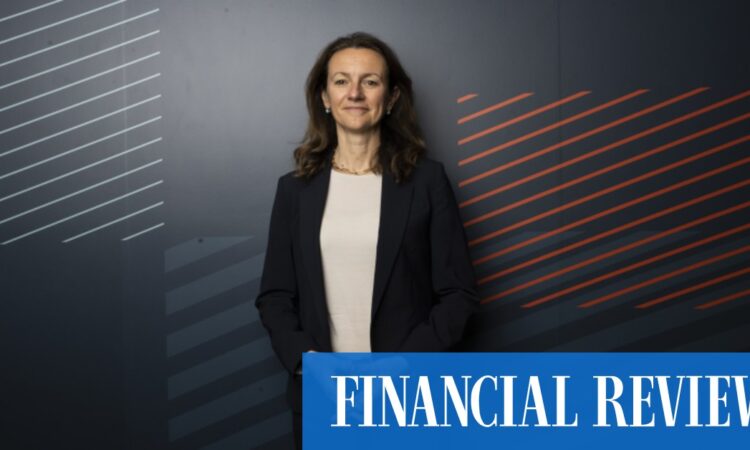
A rite of passage for a budding economist was a role at the World Bank, and the International Monetary Fund. But this job turned out to be far less glamorous and far more academic than she hoped.
“I was given a topic, an office, a computer and told to do your regressions. So I would spend six months working on something I can genuinely say no one has ever read,” she says.
Fornasari wanted more excitement than that, so she began applying for jobs and as a 26-year-old landed one at Lehman Brothers in New York in late 1998 to cover foreign exchange markets.
That was just after the Russian debt crisis, and the collapse of hedge fund Long-Term Capital Management. So there was an element of jeopardy in going to Wall Street to cover currency markets.
But it was a risk she was prepared to take and she has never looked back. She left Lehman Brothers well before its collapse and switched to Morgan Stanley before joining the buy side at Goldman Sachs Asset Management.
In 2019, she joined London-based Insight Investment where she heads currency solutions, overseeing $37.3 billion on behalf of 19 Australian clients, including almost $20 billion in currency management strategies.
The foreign exchange markets are the largest and deepest in the world. But Fornasari admits that, as an asset class, it has its quirks.
The main one is that exposures only exist in a relative sense – the worth of a currency is only measured against another. There is no absolute wealth created, income generated or expected return to be earned.
‘Pretty bumpy moments’
Most investors believe currency moves even themselves out over the long run. But Fornasari says few can afford the luxury of ignoring their gyrations.
“You’re going to have some pretty bumpy moments,” she says.
In fact, in the present environment, she says the quirks of currency investing are being touted as a strength rather than a weakness. Since bonds are no longer acting to protect portfolios by moving in the opposite direction to stocks, currency markets are now a source of protection.
Australian investors know this all too well. In times of trouble, it is US dollar exposures that come good and act as a buffer to drawdowns in the equity market.
Australia is similar to countries such as Canada and the United Kingdom that have large piles of savings relative to their economies and so are forced to invest more of their capital overseas.
So, the currency position is arguably one of the most important investment decisions they have to make.
“Australian investors have a particular sensitivity to the exchange rate, and it tends to be predominantly the [US dollar] cross rate,” Fornasari says.
More than two-thirds of Australia’s $3.7 trillion of superannuation assets are invested internationally. That figure is growing in an absolute and relative sense, which increases our exposure to currencies.
Much of that exposure is hedged by effectively taking long Australian dollar positions to hedge against the prospect of an appreciating local currency weakening the value of those positions.
And so a rising $A has the potential to become a major headache for Australian investors, particularly our competitive super funds.
What’s Fornasari view on the Australian dollar? In some senses, it’s extreme. She says purchasing power parity models show fair value relative to the US dollar is 77¢.
That’s almost 20 per cent higher than the current 65¢. But Fornasari says there’s a large qualifier attached to that.
“Currencies can be way off fair value for extended periods of time and if you take the flip side of it, the US dollar has been expensive for a long period.”
And so her view of the Australian dollar is informed by the relative strength of the US economy and its path of interest rates and the outlook for the rest of the world rather than the fair value model.
“US exceptionalism is turning out to be much more entrenched than any of us thought,” she says.
While markets were hopeful that 2024 would be the year that central banks would be cutting interest rates, strong economic data has gradually eroded that optimism.
Fornasari says the Federal Reserve is “in a bit of a pickle because they clearly want to cut rates”.
“They believe that the disinflation process is moving and that real rates are increasing, but the domestic story just isn’t really playing ball to the extent that they would like,” she adds.
The risk of Trump
So the market has shifted from pricing in as much as seven US interest rate cuts to less than two by the end of the year.
But the reaction in currency and even sharemarkets has been surprising. For one, the Australian dollar has managed to hold its ground relative to the US dollar despite the prospect of relatively lower Australian rates.
This, she says, is because the global growth outlook is improving – which tends to favour the cyclical Australian dollar.
“You’re seeing stronger PMIs – whether it’s in China or even in Europe – after a pretty extensive period of weakness.”
The other surprise is that riskier asset classes such as equities – which have rallied sharply on the signals that the Fed wants to cut rates – are still going up.
Fornasari says the best explanation is that the market can handle delayed rate cuts – just so long as they eventually come.
“Maybe central banks don’t cut rates this year, and maybe they start to cut next year, but as long as the trajectory is that rates stay at these levels, the market can digest this.
“If all of a sudden you start to price in rate hikes, that’s a different story.”
Either way, Fornasari expects currency markets to get a little choppier in the coming months. While the story has been of a strong dollar driven by US exceptionalism, a tightly contested presidential election looms.
As the November election date draws closer, currency traders are going to have to ponder divergent outcomes for the greenback.
“If you have a change in president there’s going to be the possibility of policy discontinuity,” she says.
If Donald Trump does defeat Joe Biden and reclaim the White House, he could initiate fiscal changes or seek to appoint a dovish chairman of the Fed. That could weaken the US dollar.
But he may focus on trade and impose tariffs which may slow global growth and turbocharge the US dollar.
That means Australian investors, particularly large super funds, are going to have to pay particularly close attention to the election – and call on the insights of Fornasari.

